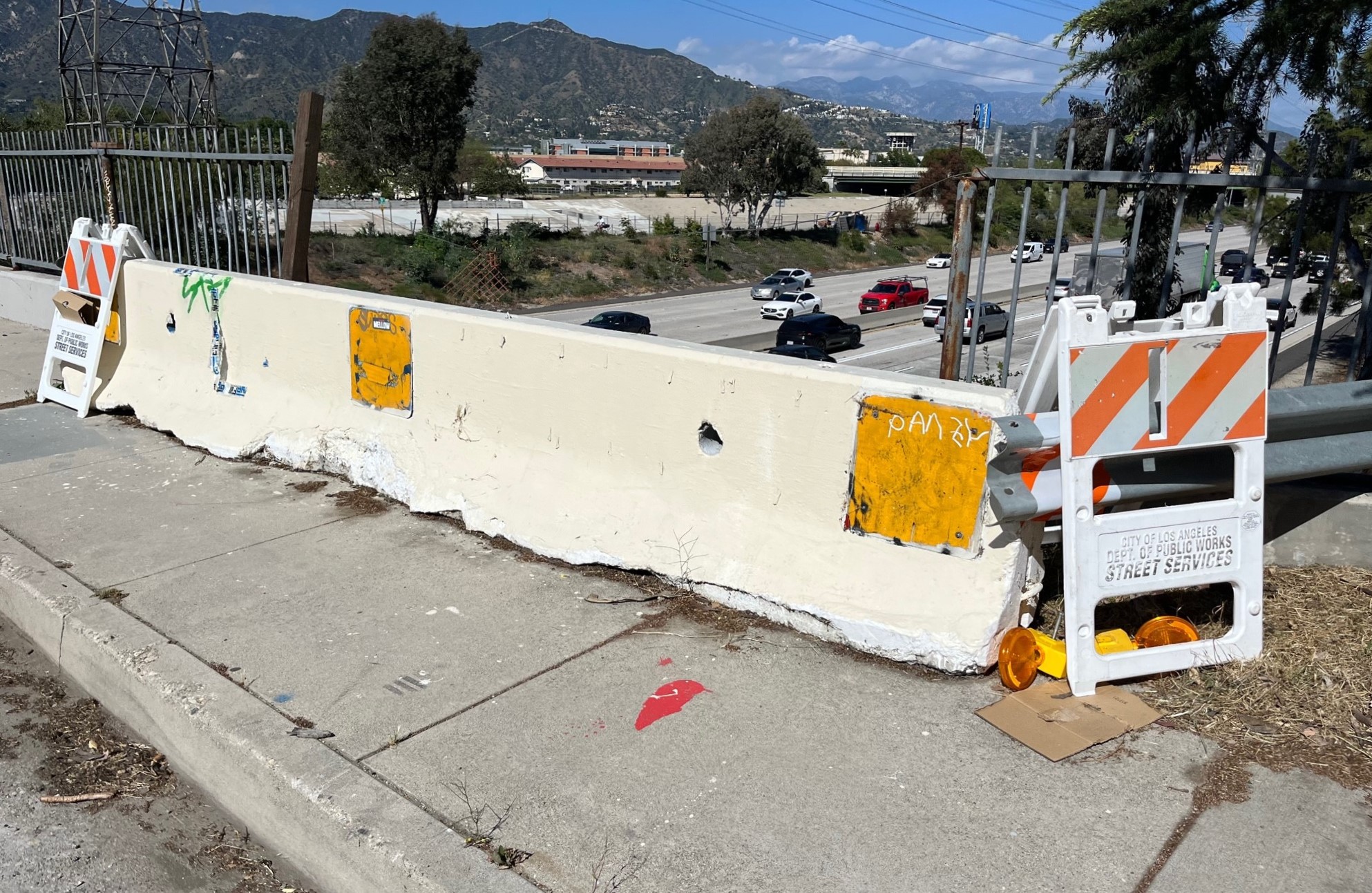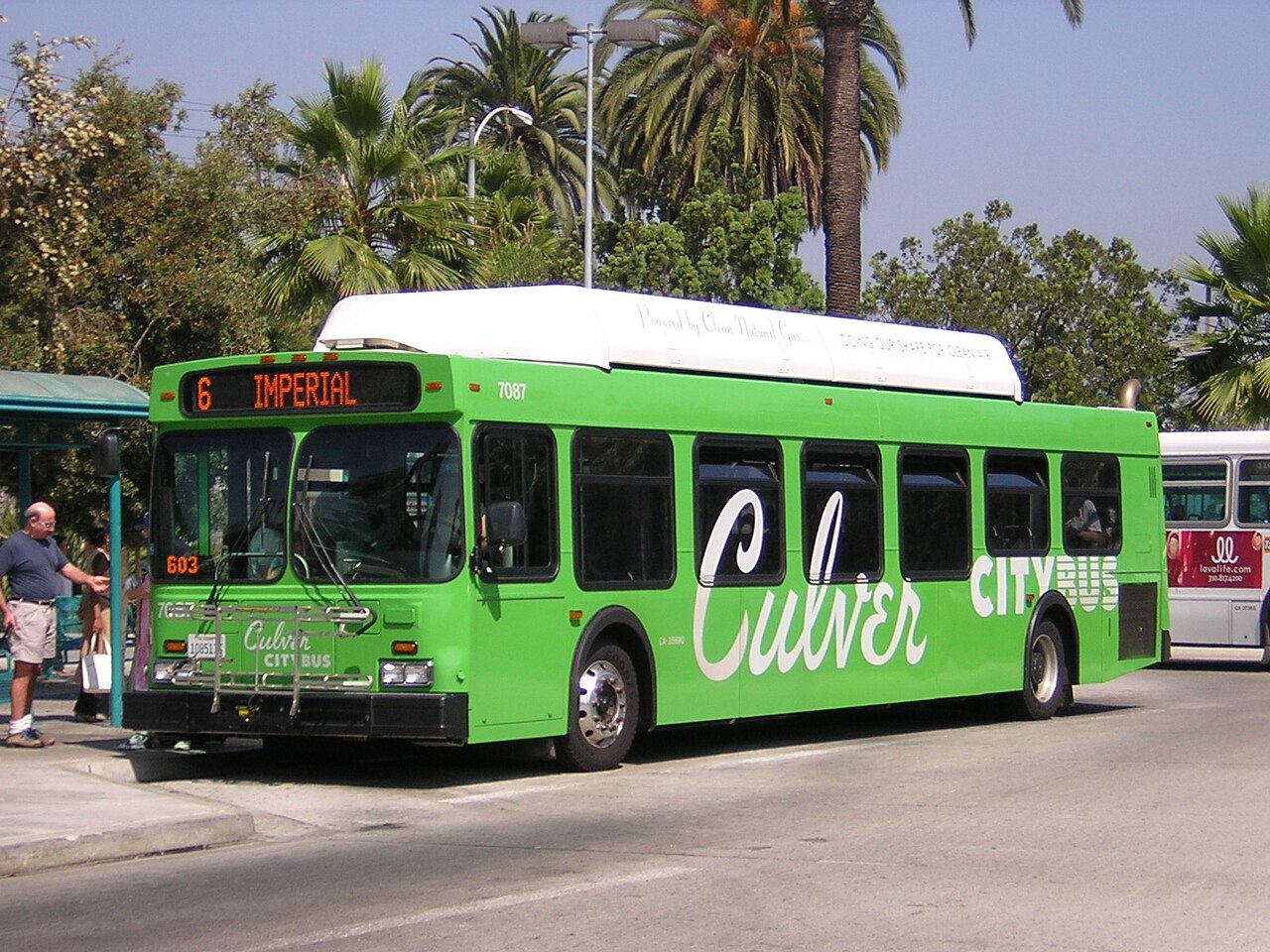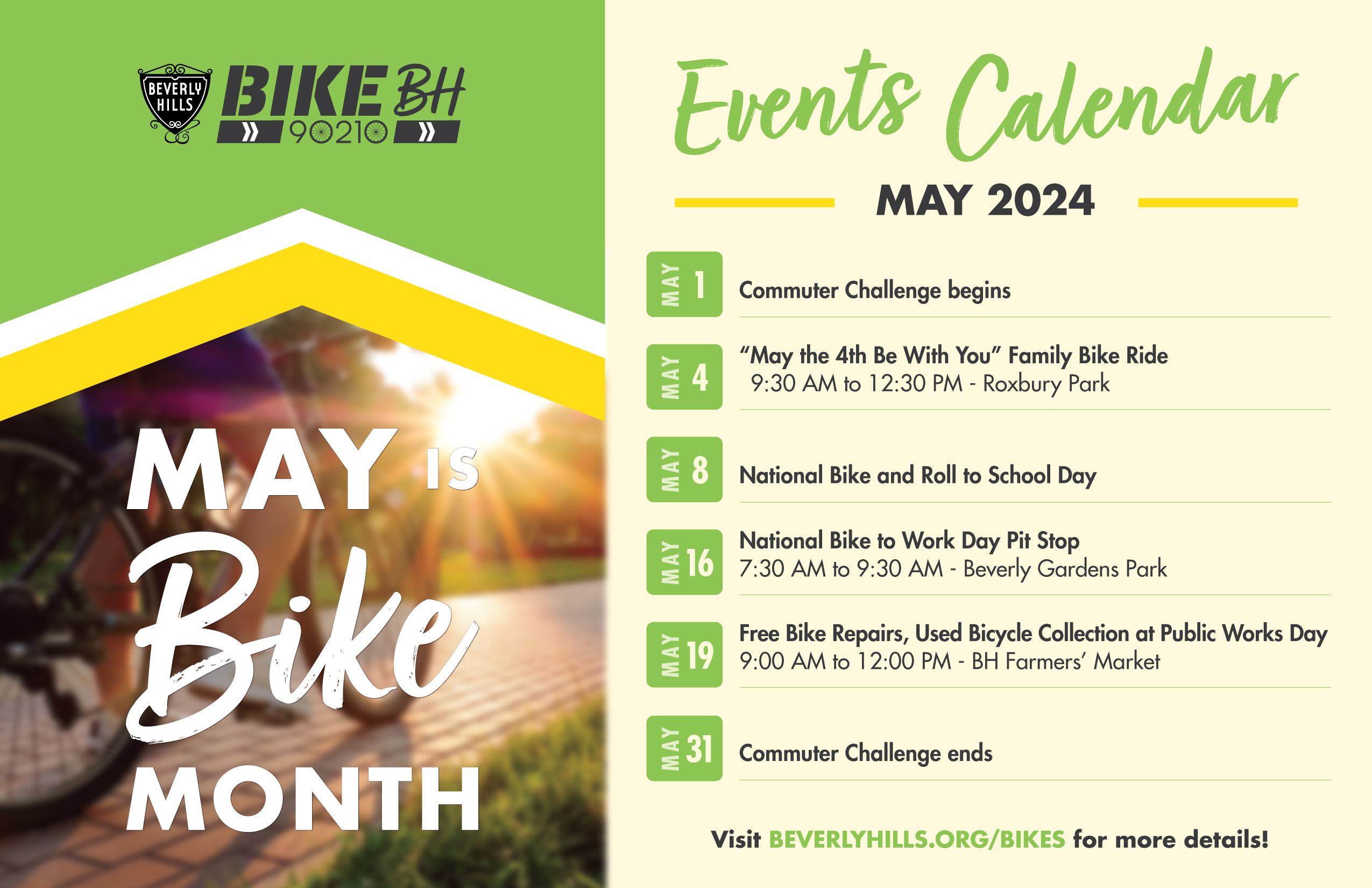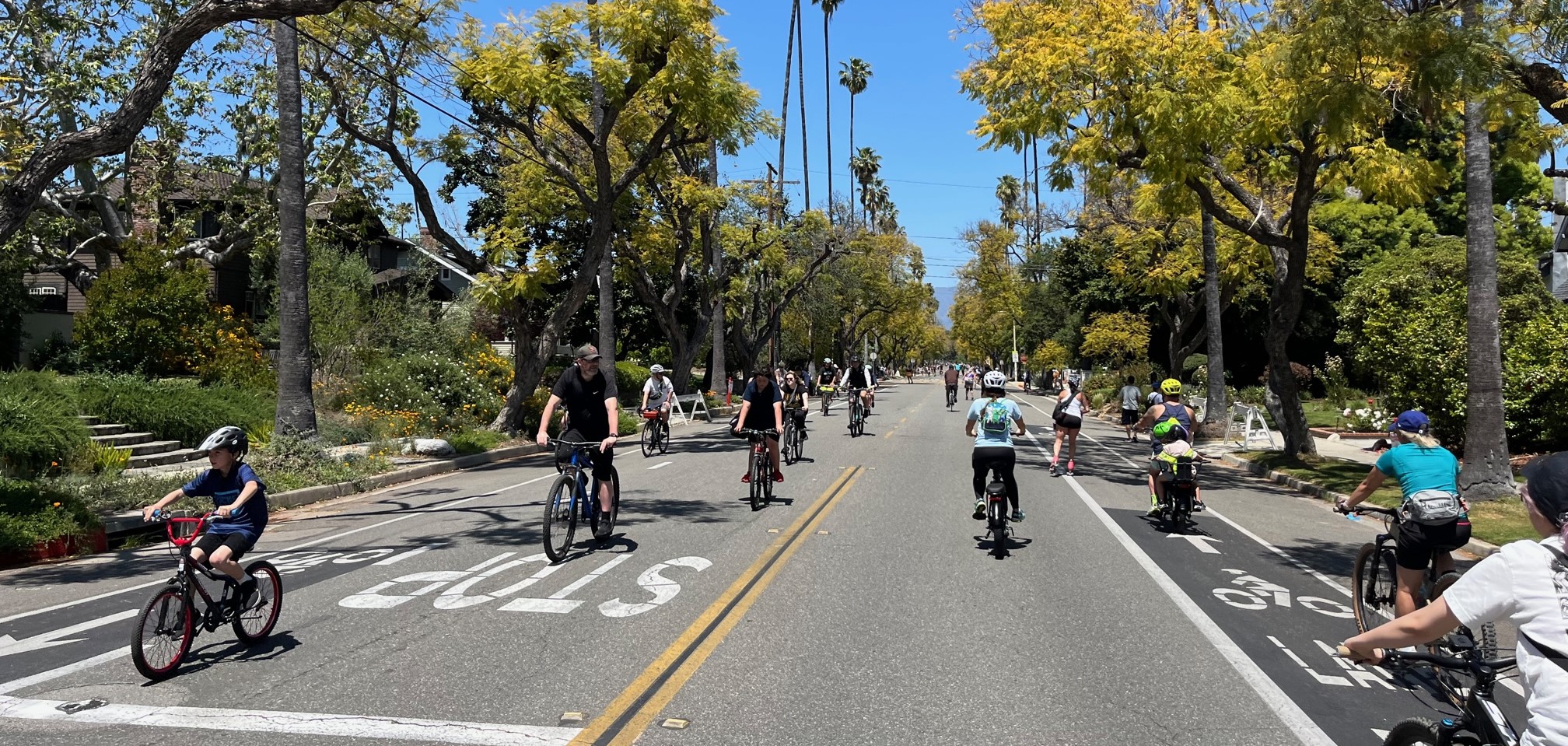L.A. Largely Ignoring Approved Mobility Plan, Locking in Car-Centric Streets under Accelerated Repaving Initiative
4:04 PM PDT on April 29, 2020
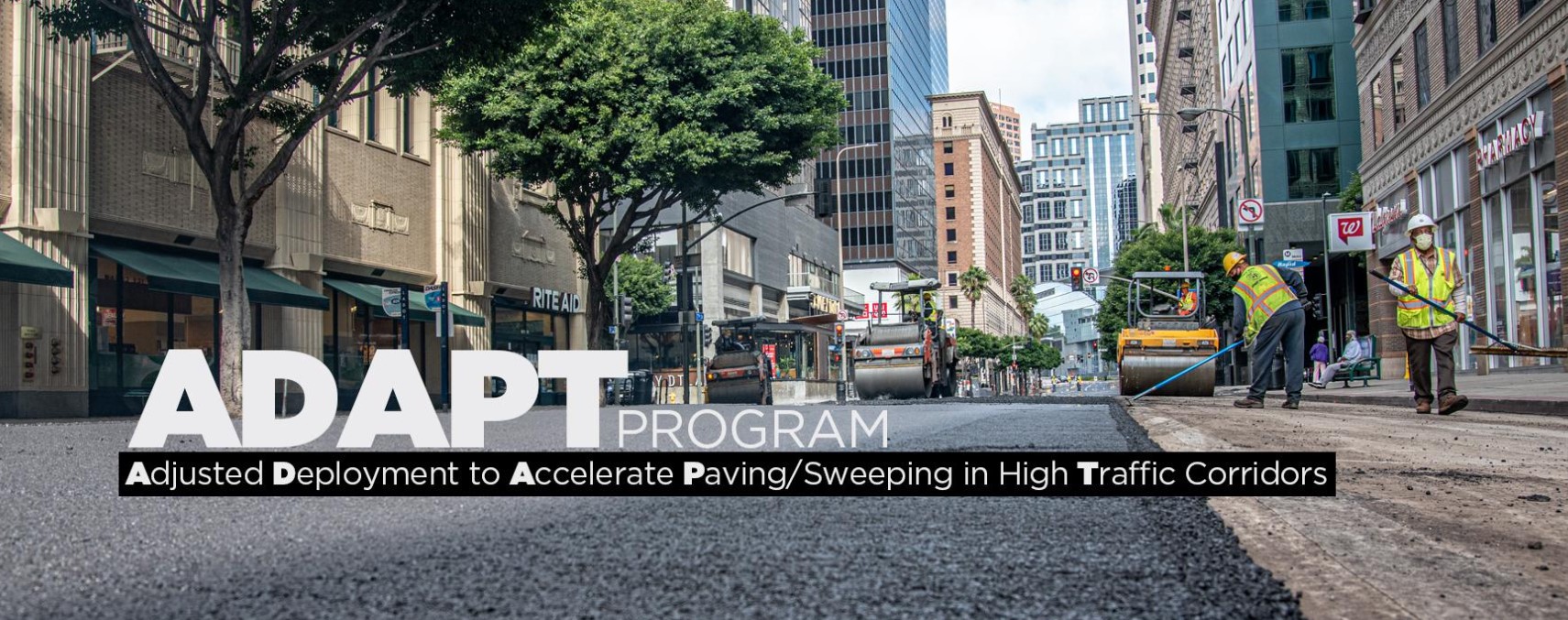
L.A.’s ADAPT program is repaving major streets during COVID-19, but failing to implement needed improvements.
The city of Los Angeles is using the COVID-19 traffic lull to accelerate street repaving. Unfortunately, current city repaving is largely failing to implement multi-modal facilities approved in the city's Mobility Plan.
Some COVID-19 project acceleration makes a lot of sense. Much construction bends over backwards to accommodate car traffic. This results in some projects - including L.A.'s bridge and freeway widening projects - being built in phases; this results in construction taking nearly twice as long and costing nearly twice as much. With traffic way down under stay-at-home orders, Metro has been able to fully close streets - in downtown L.A. and Beverly Hills - to speed subway construction.
In early April, the city Public Works Department's Bureau of Street Services (StreetsLA) initiated its "ADAPT" (Adjusted Deployment to Accelerate Paving in High Traffic Corridors) program. StreetsLA notes that "maintenance, paving and sweeping of local residential streets has been complicated by relaxed parking enforcement and is sometimes disruptive to residents who are staying safer at home." With repaving more difficult on residential streets, StreetsLA is prioritizing repairing "high-priority, high-traffic and commercial corridors more quickly and cost-effectively."
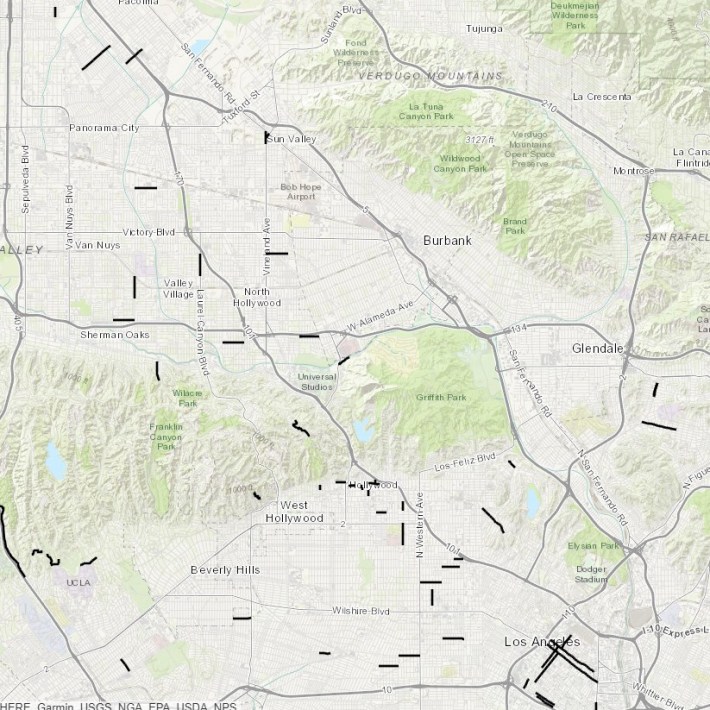
StreetsLA is stepping up repaving efforts on many recognizable major streets, including parts of Eagle Rock Boulevard, S. Figueroa Street, Hoover Street, Laurel Canyon Boulevard, Normandie Avenue, Olympic Boulevard, Pico Boulevard, Sepulveda Boulevard, Sherman Way, Sunset Boulevard, Venice Boulevard, Victory Boulevard, and many others. Though currently seeing much less traffic, these iconic streets are consistently heavily used by Angelenos - on foot, bus, bike, and in cars. ADAPT street segments are mapped on the program webpage.
Repaving is much needed. Smooth new pavement improves safety for cyclists; repaving improves the experience for all road users.
However, there are issues with how the city chooses to stripe streets after repaving.
Many streets on the ADAPT repaving docket were designated for added bus and bike facilities in the city's current Mobility Plan, approved in 2015.
The nonprofit Streets for All is campaigning for the city to implement the approved Mobility Plan on streets repaved under ADAPT. Streets for All notes that when "the city repaves major streets in Los Angeles and doesn't follow the Mobility Plan, that will set the city back decades in making the streets safe for all modes of transportation, as streets are typically not 'touched' again (adding bike lanes, bus lanes, etc.) until they need repaving." Streets for All is encouraging interested persons to sign an online petition urging Mayor Eric Garcetti to ensure that ADAPT paving supports multi-modal mobility.
Streets for All founder Michael Schneider notes that StreetsLA already repaved streets slated for upgrades in the Mobility Plan and the city transportation department (LADOT) "specifically striped them as they were before - ignoring the Mobility Plan." A few of these streets (some already repaved, others slated for repaving) include:
- Hollywood's Yucca Boulevard - the Mobility Plan shows bike lanes on Yucca, and even though the local Hollywood United Neighborhood Council was working to implement them, no bike lanes followed the April repaving
- NELA's Eagle Rock Boulevard - the Mobility Plan upgrades existing bike lanes to protected ones
- Downtown L.A.'s 5th, 6th, and Olive Streets, and Grand Avenue - the Mobility Plan calls for dedicated bus lanes. In their bus speed improvements working group, LADOT and Metro were already discussing these four streets as likely candidates for new bus-only lanes anticipated to be implemented starting mid-2020
- Arlington Heights' Venice Boulevard - the Mobility Plan adds both a dedicated bus lane and protected bike lanes
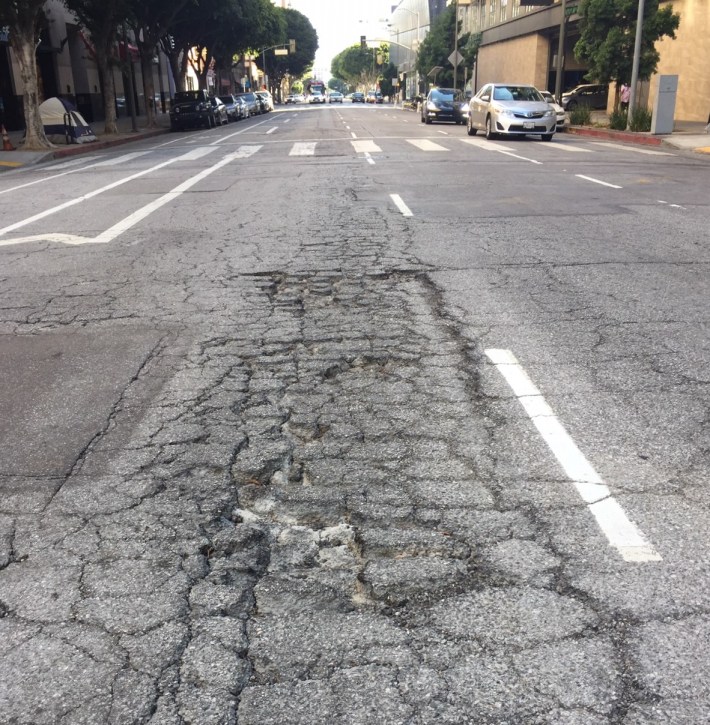
Investing in Place Executive Director Jessica Meaney expressed frustration that ADAPT has made clear the lack of city leadership in coordinating work on streets. "Agencies don't talk to each other. The city is not talking to communities - at a time when the COVID-19 crisis shows a need for greater transparency." Meaney is urging ADAPT repaving work focus on places where safe streets project planning and outreach was already underway. Since 2019, Investing in Place's Better Buses for L.A. working group has been championing implementation of bus-only lanes, including on the four DTLA ADAPT streets listed above: 5th, 6th, Olive and Grand.
Schneider notes that the city is rightly taking advantage of emergency powers to do worthwhile immediate improvements, including removing pedestrian beg buttons, without putting the decision out to an extensive public input process. But the Mobility Plan, which was already subject to a multi-year outreach process, has been ignored.
Schneider urges the city to "follow its own plan and implement approved bike and bus lanes on streets when it repaves." Schneider points out that this would save time and money on re-striping, and would comply with Garcetti's recent climate directive.
StreetsLA spokesperson Martin Schlageter responds that "ADAPT is the rescheduling of planned work, accelerating paving of commercial corridors and otherwise-busy streets in order to take advantage of reduced traffic during the Safer at Home orders" and that StreetsLA is "very interested in integrating street improvements and Complete Streets elements into our repair work whenever possible, not just as part of the short-term ADAPT program." Further, Schlageter states that StreetsLA, the city's Bureau of Engineering (BOE), and LADOT "have begun discussions... to look for opportunities to include Mobility Plan and Vision Zero designs into [StreetsLA's] future work." It is disconcerting that that these discussions appear to have taken five years (after plan approval) to begin, but better late than never.
LADOT spokesperson Colin Sweeney notes that some ADAPT paving work will "allow LADOT to deliver important Mobility Plan projects sooner" but couches this in stating that "[other] projects [not implemented at this time] will require more community engagement to ensure their long term success."
Sweeney points to three modest recent Valley bike projects as LADOT "working diligently to implement the Mobility Plan." Those improvements are new bike lanes on Riverside Drive (a quarter mile from Tyrone Avenue to Van Nuys Boulevard) added late March, upgrading a third of a mile of Vineland Avenue's existing bike lanes to protected lanes, and adding a buffer to existing bike lanes on Laurel Canyon Boulevard (a half mile from Burbank Boulevard to Oxnard Street) during recent resurfacing. If this meager output counts as diligent plan implementation, then LADOT appears to be on track to continue recent dismal trends in new bikeway mileage.
Responding to a handful of lawsuits where cyclists were killed or severly injured due to poor pavement conditions, StreetsLA has done some prioritization of street repairs that support safer cycling. Schlageter reports that StreetsLA improved almost 100 miles of bike lanes between July 1, 2019, and the end of March - with 32 miles of those bike lane improvements in the first three months of 2020.
Many trends in transportation seen under COVID-19 are anticipated to carry on into a post-COVID future. People may seek to avoid shared interior spaces, including transit and ride-hail, and favor walking, bicycling, and solo-driving instead. Recession and unemployment may put driving and ride-hail out of reach for many Angelenos. In many places, bicycling, bike-share, and bike sales are up.
Also in the near future, there is a looming climate crisis that scientists say will be even more disruptive than the novel coronavirus.
In the COVID-19 recovery, what government prioritizes makes a big difference. Milan and Paris are adding walk and bicycle facilities to curb driving and improve health during COVID-19 recovery. In China, spurred by government subsidies, post-COVID-19 car purchases are up. Angelenos can hardly imagine even more single-occupancy drivers adding to typical soul-crushing congestion and unhealthy air air quality.
The L.A. City Council acknowledged these concerns and priorities by embracing multi-modal mobility in approving new street plans in 2015. The council also acknowledged the on-the-ground reality that streets needed to better support the myriad ways people get around.
In 2020, ADAPT, as currently configured, takes one step forward and two back.
It is baffling that L.A. City is still locking in street reconfigurations that were already outdated when the Mobility Plan was approved in 2015. Like L.A.'s current ill-conceived push to widen Magnolia Boulevard based on 1999 standards, the ADAPT program appears to be more zombie engineers reaching backwards to uphold outdated car-centric routines which didn't work well even when they were city policy.
In StreetLA's defense, their engineers are following the lead of LADOT engineers. StreetsLA just does the asphalt, while LADOT paints the stripes. LADOT engineers are held in check by city councilmembers hostile to improving broader mobility if it means any well-to-do constituents would lose their current privilege, and might experience the inconvenience of a few seconds delay. L.A. City Councilmembers Paul Krekorian, Gil Cedillo, Paul Koretz, Mitch O’Farrell, Curren Price, and David Ryu have all blocked safety upgrade projects planned by LADOT.
Schneider is urging Garcetti and the city council to "take bold action" during the current crisis. "The city should do it right the first time - or wait until they can do it right. Locking in a car-centric future for the next 30 years is not what the city wants or needs, and it’s all happening at lightning pace with most people unaware of what’s going on until it’s too late.”
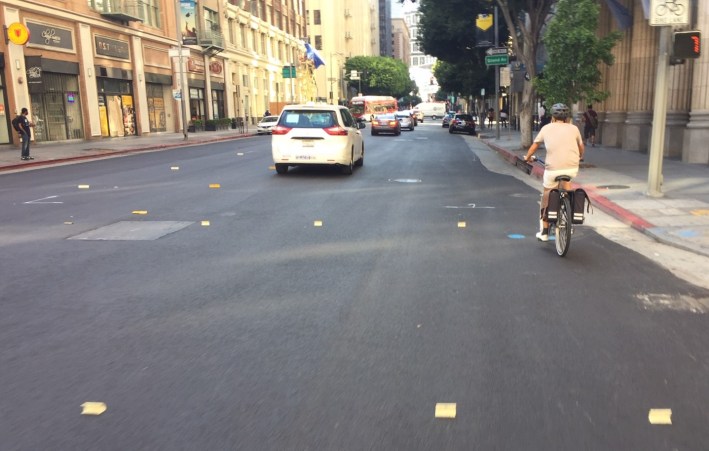
There may be a counter-example that shows L.A. can implement some quick-build facilities under ADAPT.
The initial poster child (top photo) for ADAPT is the repaving of 7th Street downtown. StreetsLA repaved more than half a mile of 7th - from Figueroa Street to at least Main Street. This stretch already has bike lanes, a block of which are protected. A plan for further 7th Street improvements has been kicking around since 2015; that plan includes protected bike lanes. The city's project website anticipates a 2021 completion date.
Downtown sees more bicycling than most parts of Los Angeles - likely due to conducive trip distances, bike-share, and a relatively good bikeway network - and is home to most of the city's protected bike lanes. The area is represented by L.A. City Councilmember José Huizar who is among the most bike-friendly on the council. Huizar championed the premiere two-way parking-protected bikeways on Spring and Main, completed last year.
When StreetsLA repaved 7th recently, the LADOT did not follow with permanent striping, but just left temporary plastic markers.
The permanent striping is temporarily on hold.
Meaney welcomes 7th Street's new smooth surface, because the old broken surface was dangerous and "bone-rattling" for cyclists. She stated that the plans for 7th Street include pilot "dress rehearsal" protected bike lanes to be workshopped at upcoming community meetings.
(Streetsblog inquired with LADOT, StreetsLA, and Huizar's office, but as of press time was unable to confirm any plans for striping 7th Street. LADOT's Sweeney stated that his department "will be announcing information regarding this project as well as engagement opportunities later this week." SBLA will update this article with further information when it becomes available. Updated 4 May: LADOT announced a virtual workshop for 7th Street Forward improvements. The event will take place this Wednesday May 6 from 5:30-6:30 p.m. Register via Eventbrite.)
Perhaps more of the ADAPT program can follow the example of 7th Street. Don't postpone needed asphalt repairs, but - and this will take some coordination and effort - pilot temporary bus and bike improvements that can be made permanent in the future, after communities have had a chance to try them out.
Stay in touch
Sign up for our free newsletter
More from Streetsblog Los Angeles
Freeway Drivers Keep Slamming into Bridge Railing in Griffith Park
Drivers keep smashing the Riverside Drive Bridge railing - plus a few other Griffith Park bike/walk updates
This Week In Livable Streets
Bike Month, Hyperion street safety, Eastside rail plans, Pasadena transit, CicloIRVINE, Culver City bus service, and more
Active Streets Mission-to-Mission – Open Thread
Tens of thousands of participants biked, walked, skated and scootered on car-free streets through San Gabriel, South Pasadena and Alhambra

